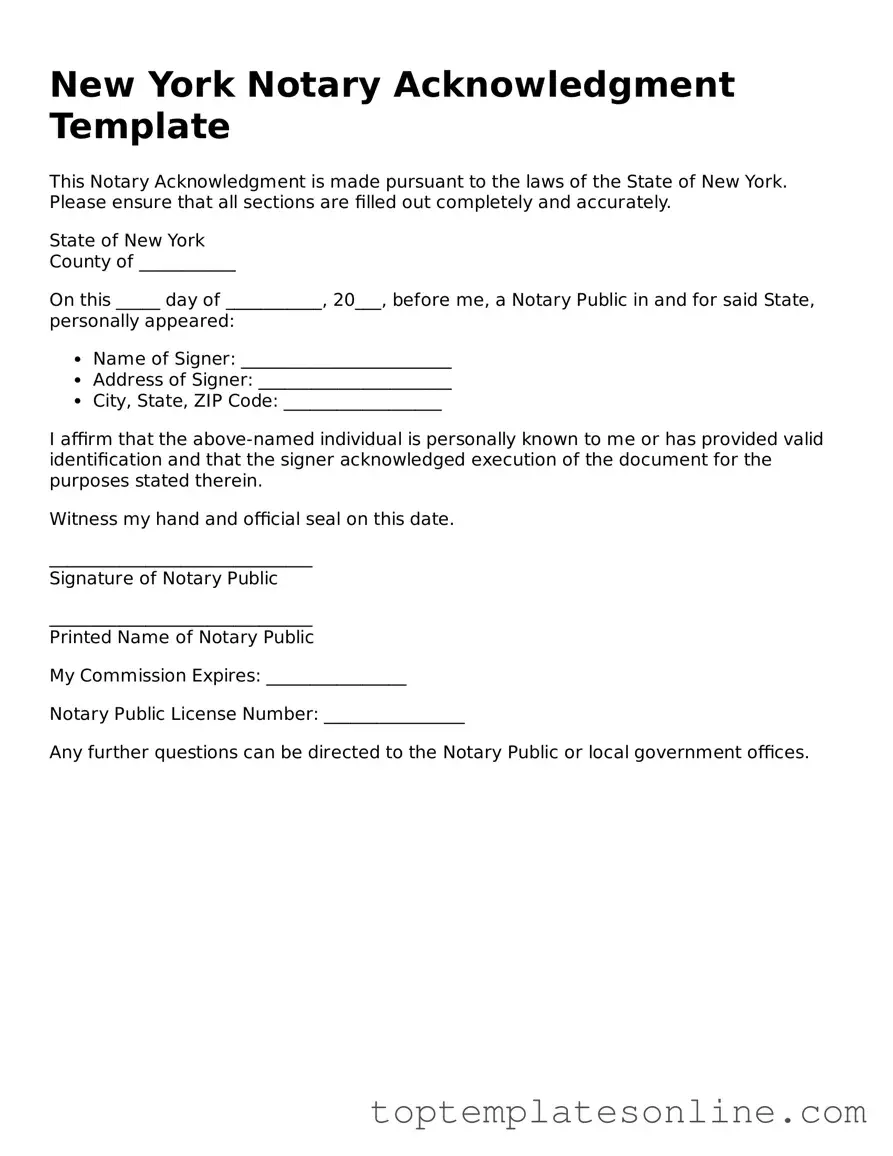The New York Notary Acknowledgment form plays a crucial role in the legal landscape by providing a means for individuals to verify their identities when signing important documents. This form serves as a formal declaration that the signer willingly executed the document, ensuring that the transaction is legitimate and binding. Typically, it includes key elements such as the date of the acknowledgment, the name of the signer, and the notary's signature and seal. The form is designed to protect all parties involved by preventing fraud and misrepresentation. In New York, the notary public is responsible for administering the acknowledgment, which requires the signer to appear in person before them. It is essential for individuals to understand the significance of this form, as it not only enhances the credibility of the document but also facilitates various legal processes, including property transactions and the execution of wills. Overall, the New York Notary Acknowledgment form is a vital component of ensuring that legal agreements are recognized and upheld in a court of law.
